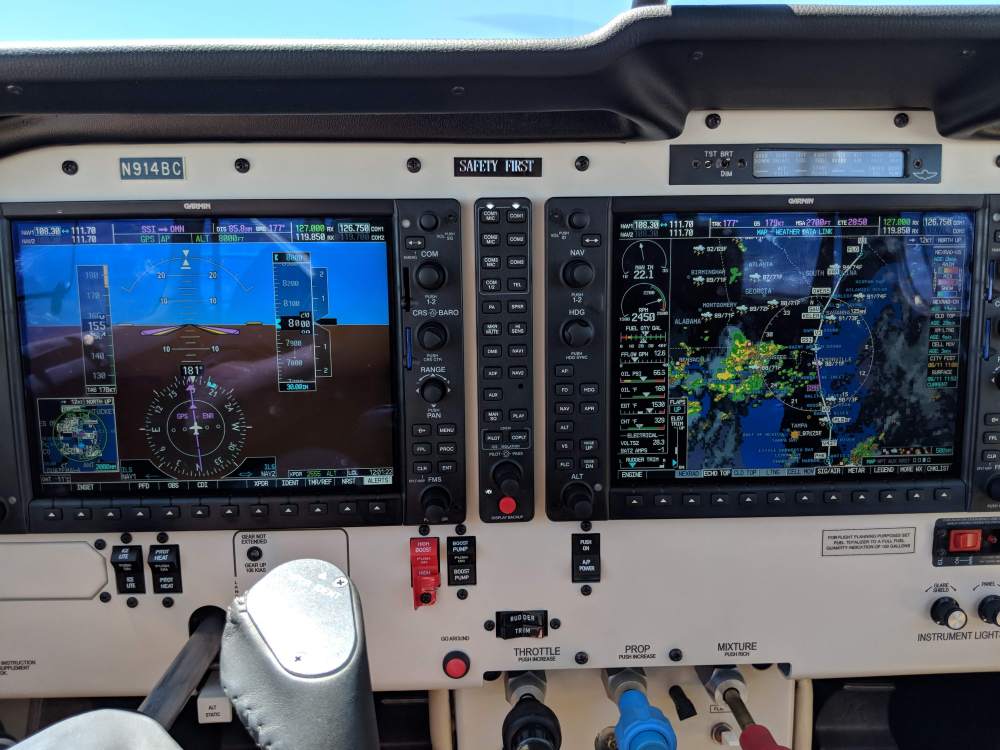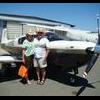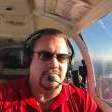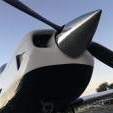Leaderboard
Popular Content
Showing content with the highest reputation on 08/01/2018 in all areas
-
@Dream to fly check your PMs in a few minutes. I installed a 430W myself and I’ll walk you trough the paperwork you need.5 points
-
I kind of like the Philips because the slotted ones are more prone to the screwdriver slipping and scratching the paint; even if you are careful your MX might not always be... (says the guy with slotted fasteners and scratched paint).4 points
-
Yeah I had one of those in 4BE and may start keeping one in the plane as a backup (the EDM-700, soon to be a -730, has a volt meter, but again, it's in Marana). Along with a handheld, PTT switch, headset adapter, external antenna hookup, flare gun, parachute, a .45 automatic, (2) boxes of ammunition, four days' concentrated emergency rations, antibiotics, morphine, vitamin pills, pep pills, sleeping pills, tranquilizer pills, a miniature combination Russian phrase book and Bible, $100 in rubles, $100 in gold, 9 packs of chewing gum, prophylactics, lipsticks, and nylon stockings... Sent from my iPhone using Tapatalk4 points
-
4 points
-
Given that I tell them you don’t want to take ownership of the plane, I make up a bill of sale, give them the plane, they may be able to recoup some of the 8k .4 points
-
The rubber covers for these switches tear over the years. These can be purchased form online electronics suppliers such as DigiKey, Mouser and Allied Electronics. Here are the P/N’s you will need:Short boot for push button - Tyco P/N 1825615-1Long boot for toggle switch - Tyco P/N 1825609-1Each cover is between $4 and $7.3 points
-
Paul, I know this is a somewhat older thread, but I did a presentation at AirVenture this past week that discussed this change to the SiriusXM (SXM) radar. My response is not directed at you in particular, but someone who attended my presentation asked me to comment here... This "twice as fast" catch phrase as SXM is using affects both lightning and the composite reflectivity mosaic. Just as a refresher, composite reflectivity examines the base reflectivity (dBZ, where Z is the reflectivity parameter) from every elevation scan in the volume coverage pattern (VCP). It then extracts the highest dBZ in each column over the radar coverage region. That could have been from the lowest base reflectivity elevation angle (lowest tilt) or the base reflectivity from one of the higher elevation angles. As I discussed in my presentation at AirVenture, the term "base" does not mean lowest as most pilots assume...every elevation angle has a base reflectivity product. To create a mosaic, the composite reflectivity from each radar site must be stitched together (there can be some nasty assumptions here with this process). As you might imagine, the WDR-88D NEXRAD Doppler radars are asynchronous. That is, one radar site may be scanning the atmosphere on the lowest elevation angle while a neighboring radar site may be scanning the atmosphere on the 4th elevation angle. There are many different scanning strategies depending on the type of weather expected in the area (severe, drizzle, snow, etc). Nevertheless, TWC (SXM's provider) doesn't care about the asynchronous aspect of the radars. They simply grab the last known complete base reflectivity scan from whatever elevation angle and count backwards in time from there until they've grabbed an entire "volume scan's" worth of data. For example, if the radar just completed the 4th elevation angle, they grab the base reflectivity from that scan and go back to elevation 3, 2, 1, 14, 13, ..., 7, 6, 5 to grab the base reflectivity from those scans. Perhaps a neighboring radar was finished the 7th elevation angle, they would grab 7, 6, 5, 4, 3, 2, 1, 14, 13, ..., 9, 8 and so on. In this case I'm assuming that every radar has 14 elevation angles per volume coverage pattern which is not always the case. So to get the twice as fast updates, they simply schedule this process above every 2.5 minutes. They could do it once a minute. But, both FIS-B and SXM are highly bandwidth challenged...you can only put so much data in the small pipe...and it has to be scheduled accordingly. Of course, any particular pixel you see on your display could have been from the oldest elevation scan or the newest. And yes there are delays in processing and uplink/downlink that occur. For lightning. At a scheduled time, TWC pulls all data collected in past 2 minutes and puts it into a file, which is then queued for SXM broadcast. Add 10 seconds of processing and queuing. All said, the lightning data a pilot would see could be anywhere from 25 sec to 2 min 55 sec old at reception in the cockpit. The age (I call this the virtual age) you see on some displays is based on the time of reception and not the age of the product. The natural age of the product varies as stated above. Of course, there could be other delays. For example, the software vendor could choose to hold that data for a period of time before displaying it (why that happens is a whole different discussion). Once received, you stare at that data for another 2.5 minutes until a new set of data is received. Therefore, moments before the next update is received, the lightning could be 2 min 55 sec to 5 min 25 sec old (although the "age" in the display may only say 2 or 3 minutes). Same is true of the radar mosaic. The faster refresh rate cuts down that stare time from 5 minutes to 2.5 minutes. The virtual age is based on the time of reception...once again, this could have been from the oldest elevation scan or the newest (you don't know). In a perfect world, the average natural age of the radar mosaic is 3.5 to 5 minutes old and then you stare at that image for 2.5 minutes now instead of 5. Also important to understand is that this radar mosaic is highly filtered. It's designed to show only those returns that come from actual hydrometeors. They attempt to filter out ground clutter and anomalous propagation, but sometimes it does get through. And in the worst case scenario, they can add a manual gross filter in a region where precipitation is highly unlikely where it filters out ALL returns...so if they fail to remove it in a timely manner, I've have seen them filter out real precipitation returns...even severe storms in some cases. It happens more often than they want to admit. That's why I always have lightning (and storm tracks) turned on...it's not part of that gross filter. By the way, the NWS is experimenting with lowering the lowest elevation angles for some radar sites. The lowest elevation angle is 0.5 degrees. This test will include dropping the lowest elevation to -0.2, 0 and +0.2 degrees. Since December 2017, the radar in San Francisco has already been operating at +0.2 degrees (MUX). Sorry for the length of this response, but I hope this helps clear a few things up...3 points
-
I removed the spring loaded door. I like to see the breakers they are part of the plane and do not need to be hidden. However, I am an electrical engineer so I like those kind of things.3 points
-
chrixxer just heard your atc conversation from the Burbank incident, have to say you were incredibly composed and calm, way to handle it.3 points
-
Just get your A&P to generate a 337 that says installed 530 per STC whatever and site the Garmin STC number on the form. The 337 will go to Oklahoma because its using FAA approved data. Then your A&P makes a log book entry and signs. Get a copy of the flight manual supplement and keep it in your airplane. You should be good to go.3 points
-
The Mooney Caravan leadership made a great call to hold the Caravan due to low ceilings and visibility on Saturday. They have established a set of go/no go weather minimums and were never presented with a weather window that met this criteria. Sunday early afternoon the weather improved greatly and all 62 Mooneys were lead safely to the North 40. Hats off to the Mooney Caravan Flight Ops and safety team.3 points
-
3 points
-
No, the lowest fuel level a dipstick will measure is about 5-8 gallons, so there's no point draining the tank. Just use enough fuel so there's no fuel under the inlet. Then start adding one gallon at a time, making note of the location on the dipstick until you get to a known volume on the tank (either the tab or the filler neck). Then you work your way backwards from there to connect each mark with the known quantity.2 points
-
Did you have a good pre-buy inspection on both of these aircraft? Because you have had more problems with airplanes in the past month than I've had in over 20 years and 12,000 hours of flying, including 3 years full time as a ferry pilot and 8 years of aircraft ownership. And working 6 years in a shop. All of it. An alternator failure is not an emergency in VFR conditions. Going through the POH or the checklist will direct you to check the circuit breakers and if necessary, pull and reset the field breaker to reset the crowbar circuit in the voltage regulator. I've only had to say this 3 times in my entire career, but I think some sort of safety stand-down is in order for you. The other two pilots are dead. i think you are next. Luck and hope are not strategies. You need to get a handle on this, and its not all the machine here. You have had two outright complete power loss events and both, for one thing, have dubious fuel states. And neither was solved. So nothing can be applied here to learn from.2 points
-
Com'on Paul....Gotta give the guy credit for having the balls to admit he didn't have a clue......Ballsy , even for a Jersey guy...2 points
-
Yeah, I'm hoping the next "chapter" is simply: "And they lived happily ever after." With a prologue... "When he landed at Kerrville, the broker was already there, waiting for him. 'She's going to a good home,' she said, as he gave the blue cowling one last pat of affection. Eyes threatening to leak, he turned away from the old bird, and started walking towards the factory complex across the tarmac, where his new Acclaim Ultra II was being rolled out. A grin started to spread across his face as he saw the three bladed prop emerge into the sunlight. 'Mooney Zoom!'" Sent from my iPhone using Tapatalk2 points
-
Thanks for saying! I'm a lawyer actually. Aviation and other litigation matters. I'm looking forward to some successes too ... and learning everything I can from what's gone before. (I'm still processing...) Sent from my iPhone using Tapatalk2 points
-
But--hard to open can also mean "installed crooked," or lots of water in the tank after a hard rain.2 points
-
IO550.... smooooooth... Balanced injectors.... expect Gami spread of .1 or 0... Dynamicaly balanced prop... doesn’t get any smoother... 310 hp... even better... See if we can get some variable ignition timing... Best regards, -a-2 points
-
IIRC, you have to be careful not to over torque it when you screw it back in.2 points
-
Geez @chrixxer! You should buy a lottery ticket at this point! Glad you're down successfully and safe! Oh god, that's one of my pet peeves when people say that.2 points
-
Just wanted to say it was awesome meeting everyone at Oshkosh, and if I was unable to meet you, hopefully I can at the next mooney meet up if its anywhere along the western US! Oshkosh proved to be very fruitful, and I'm happy WingSwap was able to make it. A little bit of info about the company I'm happy to report, only been open three months but every month I've doubled in traffic! Wanted to thank you all for the support! Jesse2 points
-
Sure they do cost more, but they are very efficient as well. I regularly go 175kts on 13gph, and can throttle back from there... Sent from my iPhone using Tapatalk2 points
-
With all that fuel flowing around I'd be careful with those flames off the nose. Glad you got it sorted out.2 points
-
You need to love this site, the members and the vendors that monitor and respond to request, questions and comments. MS is a great resource to the community of Mooney owners.2 points
-
You might consider having your avionics guy put an adaptor plug in the panel tying into an antenna for your handheld. Probably overkill, but that extra range might look good some day off in the future.2 points
-
I think the message that is being conveyed is that at the end of the day we all accept you made the decisions you did based on you being the PIC. That said, those decisions made were questionable. This isn’t about I’m a better pilot than you discussion, it is just pilots with a lot more experience pointing out their concerns. I know where Jim is coming from. We have lost several MooneySpace members and unfortunately there are indications they were cavalier about the acceptance of risk. Personally, if an A&P were to tell me that stuff about the fuel pressure, I would insist on it being corrected before I flew. After the repair, there would be no way I would accept an intersection departure. And I certainly would not accept the fuel “just disappeared” theory, especially on a military base! I applaud Jim and Byron for pointing this out. At the end of the day I treat flying as something that could kill me and my job is to stack everything in my favor so that it doesn’t happen. Sent from my iPad using Tapatalk Pro1 point
-
The key thing here is having a radio/instrument guy you can work with... Build those relationships... ask rather tough questions in advance... Or after the fact, in this case... How much time would it take to verify each wire? One minute per wire? Its going to take some time... measured in hours... Visit a couple of shops... perfect the wording of your question... ’I bought this plane... It came with this radio installed... Seems like everything is order... How do I verify it is installed properly and meets all legal challenges... Is that work something your shop does... how much will it cost and time to complete, please quote... If they look in and in a few minutes point out all the connections are done differently than standards... that is the risk you have by doing this yourself... If you used all the right materials and followed the proper procedures, how much risk is there...? When flying in IMC you want to know if There is something in the wiring that can be perfected prior to use... Kind of a quality / qualification step... PP thoughts only, the experience comes from installing equipment in the FDA environment... one guy does the wiring, the next guy does the inspection/verification... the third guy runs the machine through every step... In the end, you have it wired the way you want, and tested and documented properly for the real world of IMC... Get something you can rely on. Pp thoughts only, not a wiring technician... Best regards, -a-1 point
-
(1) Yeah, well, when I can afford a new or lightly used Acclaim Ultra, I'll do that. Until then, like most people, I'll just try to fly the best "classic" I can find. I trained in planes older than 3RM, and the rentals I was flogging were generally no more than 3 years newer. 3RM has about 4650 hours over 49 years, or about 95 hours/year average. (2) I did, I got transition training in an M20B from DuBois at Chino. But not in 3RM. (But, I didn't really feel like I needed transition training for 3RM, it's not that dissimilar to 4BE (F vs. E); I'm familiar with the GNS430W and the S-Tec 30 and the KX-155 and the EDM-700. The FS-450 took about 3 minutes to learn. The emergency gear extension protocol isn't dissimilar to the Cessna 182RG and Arrow complex trainers I learned in, and I have that checklist handy... I did have Lou DuBois take a look at 3RM when I got her, he's heard her run. But I don't think anyone would have predicted what happened over Mugu a few weeks ago. There were no warning signs. (3) 3RM has been worked on by LASAR and Top Gun, recently... (4) My IR training was typical Part 61, but to date I haven't had any IFR issues. Wait, where's the wood I need to knock until my knuckles are bloody...? I stay current, including periodic IPCs required by the Cirrus insurance. (5) She's my forever-for-right-now plane. I'll have her years, barring calamity. I can't say I'll never upgrade, but I have no immediate plans to change airframes. (6) The -730 will do almost all of that, and will live on as backup instrumentation when I convert to glass. (7) That's a thought... Are there any such, local to SoCal or within MooneyZoom™ cruising range? (8) Naw, I'd never do that! (9) Link? (10) So I'm learning... (11) Always. (12) I already fly with a wide range of pilots in a variety of aircraft (so many bad habits out there; if we ever share a beer, ask me about the 5000 hour ATP...), but I'd love to right seat with any of y'all any time. (13) That hasn't been a problem, until recently... Thanks for the thoughts!1 point
-
I would think, though, that knowing I'd be flying into the busiest and most crowded airspace known to man, I would be respectful and kind to the controllers by: 1 - be super paranoid about having a copy of the NOTAM and 2 - have read the NOTAM cover to cover and 3 - rehearsed my expected approach before the flight and if somehow the NOTAM got eaten by the dog or the 3 year old (or both) in the back seat, I'd tell ATC on my initial callup I forgot the NOTA--er, that the NOTAM was eaten, and ask if they had the ability to help me out, rather than hemming and hawing and admitting later that I didn't have it.1 point
-
1 point
-
When the chips are down I can only hope to be as cool and collected as our valiant OP. I do feel his pain, my own radios are playing host to a small tribe of gremlins which are playing hob with my ability to communicate. I've had light gun signals more than once. Nice to know I can see the things.1 point
-
This discussion you're having now you probably should've had before you bought the units. You're asking for someone to install the unit you bought used and assume the responsibility on your behalf. That's not an easy thing. Expect to pay more to have it installed than if you bought it from a dealer. The dealer has a margin built in on the units they sell and install. A used install has no margin for them and they will not assume the responsibility and all that it entails. As the buyer you have to assume the responsibility of making sure what you bought is what you think you bought and this means installed in the airplane. Without proper documentation you cannot legally put the unit in a certified airplane. That doesn’t stop some people from doing it everyday. But finding someone to do it for you is not easy. I stopped in to a shop away from home to change the oil a couple of years ago and I had a filter with me. They refused to use my filter because they could not trace the paper trail as to where it came from. It may have been extreme overkill but on the other hand it is an FAA repair station and I understand they need to remain in business. You have 8130's and that's a good thing. Maybe an option would be to go to a dealer and see how much they want to assume the responsibility and install it for you. You may find that you would be better off to have gone to the dealer initially by passing these headaches. Another option may be to go back to the seller and/or issuer of the 8130 and see if they'll install it and how much it would be.1 point
-
I think after reading the tone and intent of your posts,that is probably a good idea1 point
-
Just wanted to thank everyone for their input; most appreciated! After I sort this out, I'll post back...who knows, it may well be more than one thing responsible for my high oil temps and having to climb at reduced power to keep my CHTs under 400....fuel flow was a thought, but timing, baffling, vernathrem, plugged oil cooler...1 point
-
You can get USB/lighter adapters that display the input voltage, which I've found very handy when flying with either janky gauges or an iffy charging system. Like this: https://www.amazon.com/ToBeoneer®-Cigarette-Voltmeter-Protection-Temperature/dp/B015GO3ZOM/ref=sr_1_4?ie=UTF8&qid=1533082102&sr=8-4&keywords=usb+cigarette+lighter+adapter+voltage+temperature That said, this is also the same type of adapter that can cause radio issues if you're not careful. What I've found is that a particular adapter either does or doesn't make noise, so if you use it and things are fine, it's likely to stay fine. If you have trouble with squelch issues, try unplugging this first. When you find a quiet one, they're very handy for monitoring the system voltage.1 point
-
Arrive at Pt. Mugu in an Uber. The airfield manager picks me up at the gate and drives me to the Mooney. Shakes my hand, thanks me for working diligently to get the plane off his facility. I preflight. Left tank, 15+ gallons (I have a dipstick, but it's for a Cessna; if I add 5 gallons to what it indicates, I'll always be conservative). Oil, 7 quarts (I add when it drops below 6). Fuel caps are already wearing some surface corrosion, after just a couple of weeks on the line here. Right tank ... Is bone dry. (I filled to tabs at Riverside and then flew a bit less than an hour to CMA, then about 20 minutes from CMA to engine out to partial engine recovery to NTD. I should have had *at least* 30 gallons on board.) Check with the A&P. It's a mystery to him. There's no fuel pooling below the plane, there's no smell of AvGas, everything looks okay. Maybe someone drained it? IDK. I have enough to make it the ~6 nm to CMA with VFR reserves. She starts on the third blade turn, as she always does, though the turns themselves are just a tad on the sluggish side. It's been sitting for 3 weeks, to be expected? Battery was new in October 2017 I think (relatively recently, in any case; Concorde RG-35AXC). My engine computer is in Marana, so I have no volt meter (plane wasn't equipped with one originally); the landing lights are LED, so I don't have anything I can test with that will give me a visible draw on the ammeter (pitot heat doesn't move the needle, though I've confirmed the heater works), but it looks normal. My fuel pressure is spiked past 30 psi. I text the A&P: The lines need to be purged, the gauge needs to be debunked, but it's okay to fly. Taking your word for it ... COM1 is a GNS430W, COM2 is a KX-155. Audio panel is a GMA450, transponder is a GTX-327. I get ATIS on COM2, it's loud and clear. I contact ground on COM1, loud and clear. They taxi me Alpha to Alpha 2, and I have the option of back-taxi the length of the runway, or an intersection departure. I still have 3500' of runway, and the engine is running strong. Run up is normal. Flaps to take-off. I'm rolling. I rotate. Positive rate, gear up ... What the fuck? Why did the GPS just reboot? (Maybe it's loose and I bumped it; it's right next to the gear switch.) It comes back online in that slow way old Garmins do (you have to wait for AUTOEXEC.BAT to finish running and CONFIG.SYS to load before the radio's hot) and I let Pt. Mugu tower know I'm having radio issues, in case I missed a call. As soon as that brief exchange is over, the Garmin reboots again (I haven't touched it). Crap. I switch over to COM2 and let them know I'm heading to CMA. The Garmin finishes rebooting, and immediately reboots again. I turn it off, it's going to be worthless this trip. Then the audio panel fails. Hrm. Ordinarily, no big deal, it will "fail safe" to connecting the pilot's headset jacks directly to COM1. Except, see above. No COM1. COM2 is still online, but I can't use it for anything, not even receiving. 7600 into the transponder. I haven't touched flaps yet, and at this point I'm not going to. I put the gear back down while I still have power. Check the breakers - all good. Hrm. Ammeter showing a deep discharge. Weak battery sucking all the life out of it? I pull back to 1950/19.5(ish) and enter a left traffic pattern for CMA. I don't see anyone else coming in, but I know I'm going to extend my downwind for a while to let the tower make whatever calls they need to. I activate Bluetooth on the Bose A20s and use my phone to call SoCal TRACON (the only phone number I had at my fingertips for CMA, courtesy ForeFlight), and try to get through the phonemail menu before just jamming '1' which is apparently Burbank. Hey, Burbank, sick of me yet? They couldn't hear me at all and by that point I was getting a green light from the tower so I came in and landed normally. Got off at the taxiway and saw no light from tower, so I held there. Tried SoCal TRACON again, finally managed to shout my way to getting the Camarillo Tower number. Called them. They couldn't hear me either, but I could hear them, they told me to taxi Foxtrot, which I did, over to transient. Shut down and was met by a dark SUV with lights and a guy with a badge (airport operations of some sort), who just wanted to know what had happened. I explained the situation and that was that. He seemed to relax significantly when I mentioned who was going to be working on the plane (I'm using a mechanic local to CMA for all of this), and was just "glad [I'm] okay." Met on the ramp by a line guy, who put 5 gallons into the "mysteriously dry" wing for me, and filled the "good" tank to the tab. Called the tower on my phone waiting for lunch at Waypoint and thanked them for helping me get in, and making sure they didn't need anything from me. The person who answered the phone checked with her supervisor and confirmed I was good. At least this time she's where she can be worked on easily, and without a military escort! (Getting an IRAN done on the mags, having the baffles reinstalled properly, replacing the spark plug wires and p-leads, and now troubleshooting whatever was going on with the electrical system...)1 point
-
When you unscrew them, the river flows... Found that out during the CiES installation. Sent from my iPad using Tapatalk Pro1 point
-
As much as I hate my smaller-capacity 48gal tanks with the thermos-style caps, it seems they are more impervious to water ingress than the flush-fitting design. The thermos cap sits atop a stainless-steel neck that rises above, and the entire "valley" below the fuel door has a drain going through the wing where water escapes. Ever since I resealed my tanks, I've never had water or material in my sumps, even after being parked out in days of continuous Florida rain1 point
-
I've flown with a deferred autopilot, definitely not a fun day. I also made sure that Dispatch and Maintenance Control knew that after 6 or 7 hours of duty time, we would be fatigued. If they wanted us to keep flying after that, they'd have to swap us into an airplane that had a working autopilot. Guess what- they found us another airplane. 14 hour duty day, 7.5 hours flight time, 6 legs. Makes me tired just thinking about having to do that again.1 point
-
Welcome to ownership. It was a lot easier to throw the keys at the FBO desk and say “it’s running rough” isn’t it?1 point
-
Posting just for fun as I've already had my turn at "show-n-tell", but this is our business promo vehicle. We seem to have quite a few car guy and bike guys so thought I'd toss this out just for fun. There is a GM 350 under the hood. Not a daily driver, but fun for business promo events. Makes absolutely no sense, but fun at promo and charity events. -Tom1 point
-
1 point
-
1 point
-
Partnerships in quarters are a bigger risk than the plane, IMO, agreeing on repairs, upgrades etc will drive you nuts when it’s by committee with a group of varying ideas and personal finances to consider. Have a lawyer or someone you trust to look over the llc documents, including all existing agreements and any that may be missing, and any other docs that bind you. This helps you to understand what every partner is equally responsible for despite varying opinions that may exist that you are unaware of, also, make sure there is clear understanding on all non and monthly recurring costs, as well hourly, fuel, non capital and capital bank accounts and how the money is managed and who does it. Expectations that you have of this are also an important consideration, make sure it’s something you are comfortable with and absolutely make sure everyone is on the same page as to how the planes time gets scheduled and used amongst you so there is no conflicts. Looks like a nice plane, the costs are real to get the tanks done, adsb, annuals, repairs etc, a little forethought now will go a long way later.1 point
-
If you are flying a lot of cross country stuff like gsxrpilot, I think Savvy would make a lot of sense. Having someone knowledgeable to help in an AOG situation would be invaluable.1 point
-
Why are you people so quick to drain the tanks? Waste all that Jet-A and 100 LL to flush it? Doesn’t it seem more logical to swap the Lycoming for a Pratt & Whitney? Before going to the trouble of draining tanks! Hang a PT6A on it and he'd have one serious Mooney! Think outside the box people!1 point
-
I carry a little extra altitude with my CPL (training) PO 180s only because once I have the runway made I can loose altitude with full flaps and speed brakes to hit my spot. The last maneuver I have to master is eights-on-pylons then I can take my practical.1 point
-
1 point
-
I researched the panel issue during my recent Mooney M20C search. The answer you are looking for is this: About $2000 to modify just the left side of the panel using a Lake Aero manufactured replacement panel. To modify both sides and center with an entirely new panel figure $5,000. The problem is; while you have it all a part what else will you do to run the price up? Some of us are good at limiting expenses, some are not.1 point








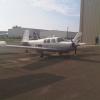



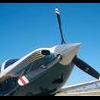
.thumb.png.7c67574d7b28f67b0b4a17760919b1ac.png)


